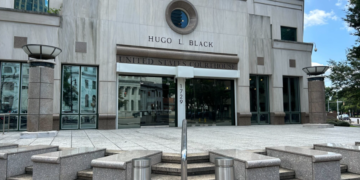August 19, 2025 Story by: Publisher
Tarrant County and County Judge Tim O’Hare face a new legal challenge to the precinct redistricting approved in June. A lawsuit was filed Thursday, August 14 in Tarrant County District Court by the Texas Civil Rights Project on behalf of the League of Women Voters of Tarrant County and a Fort Worth chapter of the League of United Latin American Citizens.
The complaint argues the mid-decade redistricting illegally reduced the voting power of Black and Latino residents in the county.
Tarrant County and County Judge Tim O’Hare filed a formal motion to dismiss a federal lawsuit on August 1, 2025 brought by local residents alleging racial gerrymandering.
The complaint targets a newly adopted precinct map—approved in June 2025—that plaintiffs argue unlawfully dismantles one of the county’s two majority-minority districts. Critics say the change effectively packs Black and Hispanic voters into a single precinct and dilutes their electoral influence across the remaining districts.
The motion claims the map commissioners approved, called Map 7, still over-represents the Black population because 25% of the precincts would be represented by commissioner Roderick Miles Jr., who is Black, while 19% of the county’s population is Black.
Tarrant County voted 3–2 along party lines in June, with Republican County Judge Tim O’Hare, Commissioners Matt Krause and Manny Rodriguez to support Map 7, a redistricting plan drawn by the conservative-aligned Public Interest Legal Foundation (PILF). Democratic Commissioners Alisa Simmons and Roderick Miles Jr. opposed the measure, with Miles unsuccessfully attempting twice to delay the vote.
“Plaintiffs imply that any scenario where Democrats lose power is racially motivated even though Black elected officials still hold a disproportionate number of district seats on Commissioners Court,” the motion claims.
Tarrant County’s dismissal motion argues that the plaintiffs’ claims lack subject-matter jurisdiction and fail to state a legally actionable offense—specifically pointing to a recent Fifth Circuit precedent in Petteway v. Galveston County, which narrowed protections under Section 2 of the Voting Rights Act.
The county’s attorneys assert that the challenged precincts are not covered districts under the VRA, and that the redistricting was motivated primarily by partisan goals—not discriminatory intent. In their legal filing, county representatives emphasize that intentional partisan mapmaking does not necessarily equate to racial motive under current Fifth Circuit law.
The dispute stems from the controversial mid-decade redistricting vote on June 3, 2025, in which the five-member Tarrant County Commissioners Court—split 3–2 along party lines—approved a new map aimed at expanding Republican representation from 3–2 to 4–1.
The firm hired to defend the county is the Public Interest Legal Foundation, the same organization rear-end adverse rulings on racial gerrymandering in Galveston County.
U.S. Congressman Marc Veasey in late May, appeared alongside Commissioner Alisa Simmons, her fellow Democratic County Commissioner Roderick Miles Jr., and members of the Fort Worth City Council to denounce the county’s redistricting attempt. The redistricting makes Democratic County Commissioner Alisa Simmons’ precinct more Republican-friendly before she’s up for reelection next year, past election data shared by the county shows.
A rare mid‑decade redistricting plan had put Tarrant County at the center of a heated debate over electoral fairness and minority representation.
On May 6, commissioners voted to move forward with five new precinct maps based on 2020 census figures—well before the release of updated federal data—triggering sharp criticisms from residents, civil‑rights advocates, and local leaders who warn the changes could undercut Black voters’ influence in this now majority‑minority county.
The five proposed maps would significantly reshape voting blocs in key precincts, notably Precincts 1 and 2, which have trended Democratic in recent election cycles. Backers, including Commissioner Tim O’Hare, argue the revisions enforce the constitutional principle of “one person, one vote” by equalizing district populations. Opponents counter that using outdated figures skews representation and masks demographic shifts that have altered the county’s makeup since 2020.
Since 2010, Tarrant County’s Black population has grown to roughly 16 percent of residents, concentrated in Fort Worth and Arlington. Critics warn the new maps would fracture majority‑Black neighborhoods across multiple districts, diluting their collective ability to elect preferred candidates to county and school board seats.
Source: KERA News / The American Redistricting Project

















